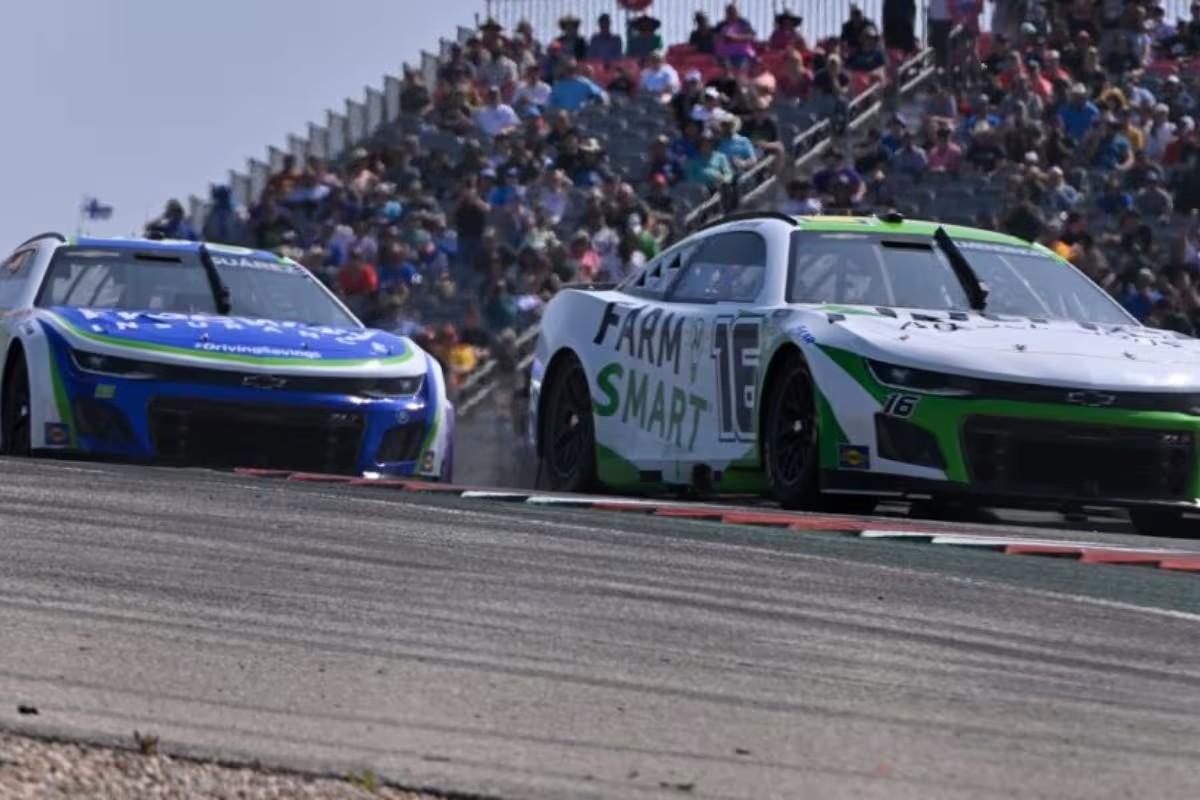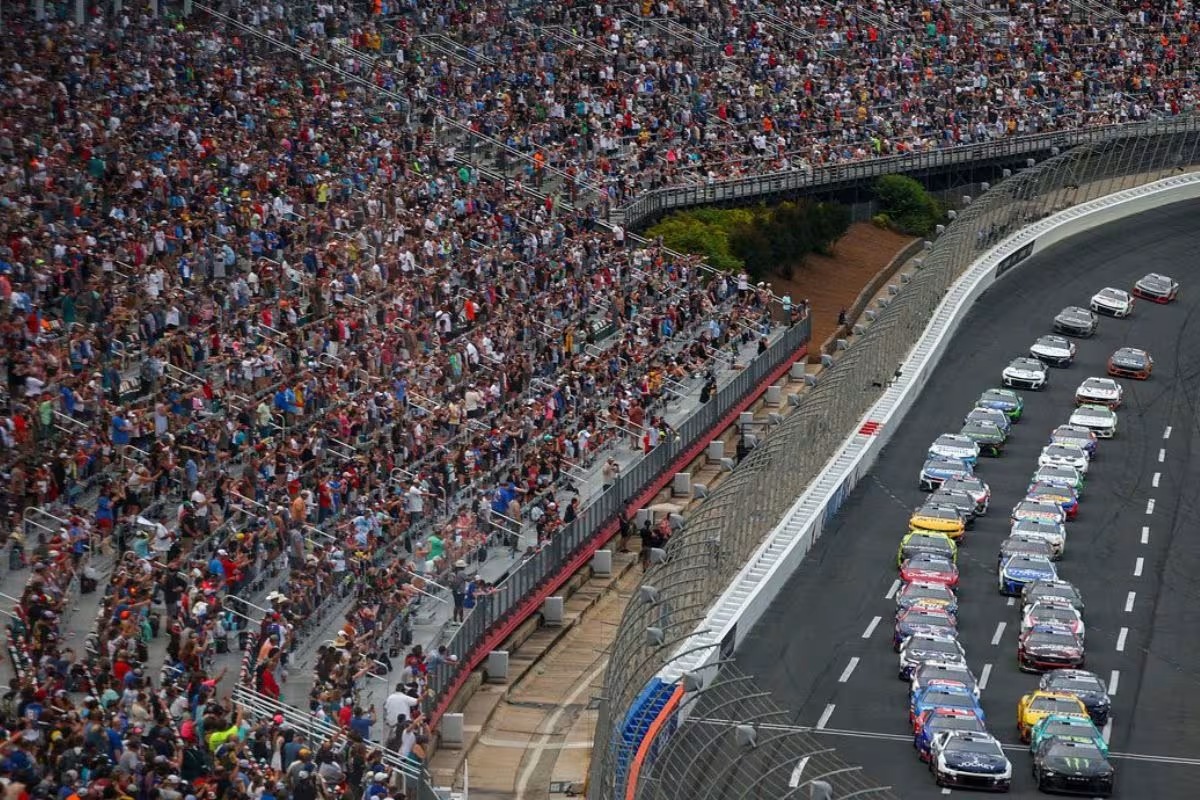Trackhouse Racing Rejects 20 Million Dollar Plan: Trackhouse Racing‘s $20 million strategy signifies a groundbreaking approach in the NASCAR landscape, emphasizing creative fan engagement and the cultivation of diverse driver narratives. However, this ambitious investment prompts a critical examination of its potential implications: could it alienate traditional fans and introduce financial instability? As Trackhouse navigates this uncharted territory, the balance between expanding its footprint and maintaining its core identity raises pivotal questions about the future of the franchise.
Key Highlights
- The $20 million investment aims to reshape the racing experience, enhancing fan engagement and potentially increasing revenue through innovative strategies.
- Trackhouse Racing’s focus on storytelling and diverse driver narratives may attract new fans and sponsors, positioning the team favorably in the market.
- By expanding to three cars instead of four, Trackhouse avoids financial strain while maintaining competitiveness, reflecting a strategic approach to growth.
- Risks include potential financial loss if fan reception is tepid, alongside challenges from traditional NASCAR practices and resistance from long-time fans.
- Success in this initiative could redefine NASCAR’s brand, establishing Trackhouse as a leader and inspiring other teams to adopt similar innovative strategies.
Trackhouse Racing’s Rapid Rise
Trackhouse Racing’s rapid rise in the competitive world of NASCAR is a demonstration of tactical innovation and effective team dynamics. Since its establishment in 2021, the team has made remarkable strides, quickly positioning itself as one of the most formidable competitors in the series. This ascent can be attributed to a tactical two-car setup, which has proven advantageous for both driver performance and team cohesion.
The integration of talented drivers such as Ross Chastain and Daniel Suarez has been pivotal. Chastain’s path to the Championship 4 race reflects not only his individual skill but also the collective efforts of the team in cultivating a high-performance environment. His ability to navigate the complexities of NASCAR races underlines the efficacy of the team’s tactical planning and execution.
Meanwhile, Suarez’s subsequent playoff run serves as a demonstration of the team’s consistency and growth mindset, emphasizing their commitment to continuous improvement.
Furthermore, Trackhouse Racing‘s operational framework promotes an atmosphere of collaboration and innovation. By fostering effective communication channels and encouraging input from all team members, the organization has cultivated a culture that thrives on adaptability and resilience.
Expansion and Business Strategy
In the domain of NASCAR, expansion and tactical business management are crucial for sustained competitiveness, and Trackhouse Racing has adeptly navigated these complexities. The recent acquisition of a tertiary charter, facilitating the entry of Shane van Gisbergen, highlights a calculated pivot that balances on-track performance with prudent financial oversight.
While the allure of expanding to a four-car team is tempting—especially given the potential to retain talent such as Zane Smith—the declining charter values, now estimated at approximately $20 million, present a cautionary backdrop.
Opting against the four-car setup reflects a nuanced understanding of the current market dynamics. Trackhouse Racing’s leadership recognizes that the economics of NASCAR are evolving, and the financial implications of such an expansion would not align with their long-term vision. The decision to adopt a more measured growth path suggests an emphasis on sustainable development over immediate gratification. This approach not only mitigates financial risk but also allows for focused resource allocation toward driver development and performance optimization.
Moreover, Trackhouse’s strategy exemplifies the importance of adaptability in an ever-changing environment. By prioritizing calculated partnerships and leveraging existing resources, the team demonstrates a commitment to innovation within its operational framework.
As the organization continues to grow, it is poised to make calculated moves that strengthen its competitive edge without compromising financial stability. In this light, Trackhouse Racing’s expansion strategy serves as a case study in balancing ambition with pragmatism, ultimately setting the stage for future success in NASCAR’s intricate landscape.
The Decision Against a Four-Car Setup
The tactical choice to refrain from expanding to a four-car lineup highlights Trackhouse Racing’s commitment to sustainable growth amidst a challenging economic landscape in NASCAR.
In an era where only three teams—Hendrick Motorsports, Joe Gibbs Racing, and Stewart Haas Racing—manage a four-car setup, Trackhouse Racing’s decision is both calculated and prudent. The complexities of operating a four-car team can be financially draining, emphasized by Stewart Haas Racing’s current struggles.
Justin Marks, the team’s co-owner, articulates a clear vision for the organization. His acknowledgment of the challenges faced by larger teams informs Trackhouse’s approach. Marks stated, “I think that sweet spot is three cars,” reinforcing the belief that focusing on a manageable number of entries can lead to heightened competitiveness.
“I think that sweet spot is three cars. Obviously four car works for Rick; it works for Coach, but for us building a team Trackhouse to the point where we can be very very competitive and strong on the race track, I think three cars is it.” – Marks
Key considerations in this decision include:
- Financial Viability: Expanding to four cars could strain resources, especially given the economic uncertainties in the sport.
- Operational Efficiency: Three cars allow for a more streamlined operation, fostering better synergy among crew members and resources.
- Competitive Focus: Maintaining a three-car lineup enables targeted development and performance improvements, aligning with Trackhouse’s goal of becoming a formidable contender.
Focus on Sustainable Growth and Unique Identity
Sustainable growth in the competitive landscape of NASCAR requires more than just financial expertise; it demands a distinct identity that resonates with fans and stakeholders alike. Trackhouse Racing‘s tactical decision to forgo a four-car setup highlights the importance of focused organizational strength over mere expansion. Team owner Justin Marks articulated a clear understanding of their operational limits, stating that spreading resources too thin could compromise their competitive viability. This prudent approach reflects a commitment to building a robust foundation before pursuing further growth.
“For a business like ours and just diminishing results on the four cars, you really start to get into that territory, is bite off a little bit more than we can chew. Can we build an organization that is strong enough to support four cars? I don’t think that was really on the cards.”- Marks
Moreover, Trackhouse Racing’s aspiration to carve out a unique identity is pivotal in differentiating itself from the crowded field. While performance on the racetrack remains critical, the narratives surrounding their drivers have proven instrumental in fostering deeper connections with fans. By promoting compelling storylines, such as SVG’s ascension to the Cup level, Trackhouse not only amplifies its brand but also enriches the comprehensive fan experience.
As the team navigates the complexities of NASCAR, their deliberate choices will ultimately determine whether this strategy is a bold move toward a promising future or a miscalculation in an unforgiving sport.
Reinventing Star Driver Culture in NASCAR
NASCAR’s evolving landscape demands not only skilled drivers but also compelling narratives that resonate with fans, a realization that has spurred Trackhouse Racing to reinvent the star driver culture within the sport.
In an era where fan engagement is paramount, Trackhouse’s strategy focuses on diversifying the driver lineup to include unique backgrounds and stories, thereby creating richer narratives that improve team visibility.
“We’ve got an eight-generation watermelon farmer; we’ve got the only Mexican driver in the sport who came to America with the dream of becoming a NASCAR racer. And we’ve got a guy now who has left a very successful career in Australia and New Zealand and moved to America. We have got a guy that smashes watermelons, a guy that punches pinatas, and a guy that kicks rugby ball. And that stuff’s important.” – Marks
This approach can be distilled into three key components:
1. Diverse Backgrounds: By onboarding drivers like Ross Chastain, Daniel Suarez, and Shane van Gisbergen, Trackhouse highlights stories that transcend conventional racing narratives. For instance, Chastain’s roots as a watermelon farmer and Suarez’s path as the only Mexican driver in NASCAR exemplify the relatable yet extraordinary arcs that attract fans.
2. Cultural Connections: The team’s strategy taps into cultural narratives, showcasing drivers who bring varied experiences to the forefront. Marks’ focus on characters who smash watermelons, punch piñatas, and kick rugby balls depicts a commitment to connecting with diverse audiences, thereby broadening the fan base.
3. Future Potential: The inclusion of SVG not only positions Trackhouse Racing as a competitive force but also as a team that adopts innovation in driver culture. As they prepare for the 2024 season, the potential for these narratives to create a more engaging and dynamic racing experience is noteworthy.
News in Brief: Trackhouse Racing Rejects 20 Million Dollar Plan
Trackhouse Racing’s $20 million strategy represents a pivotal moment in NASCAR’s evolution, balancing innovation with tradition. By prioritizing fan engagement and diverse narratives, this approach aims to cultivate a broader audience and improve brand equity. However, the inherent risks, including potential resistance from traditionalists and financial uncertainties, must be carefully managed. Ultimately, the success of this initiative will hinge on its ability to connect with both established and emerging fan bases, consequently shaping the future of the sport.
ALSO READ: Trackhouse Racing Revives Dale Jr.’s Legacy: Dale Jr. Praises Shane van Gisbergen




